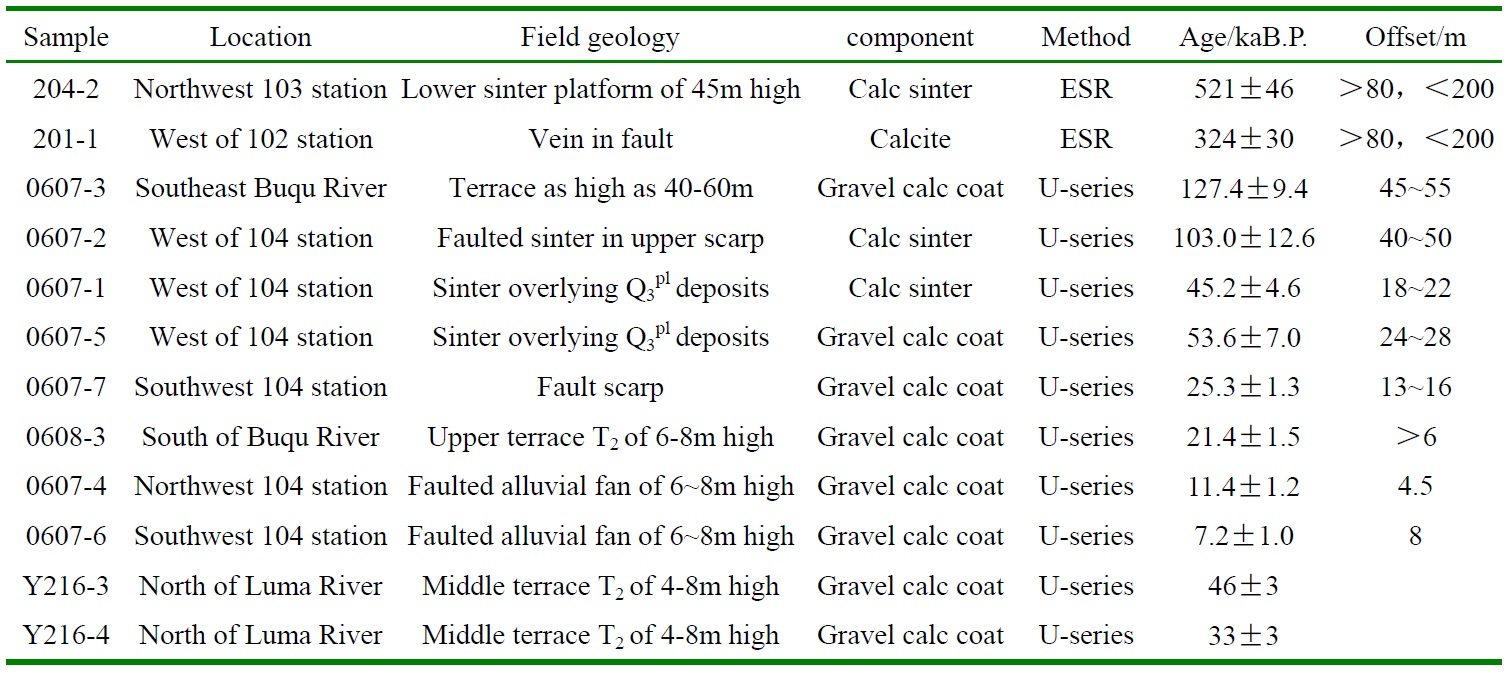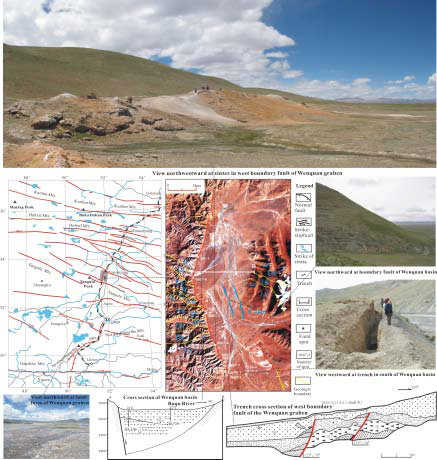Golmud-Lhasa Railway Geological Survey
365体育官网入口_365全球最大赌博_365bet正网盘口
The Wenquan graben is located north of the Tonggula Mts. and its east dipping west boundary fault controls formation and evolution of the Wenquan basin. It formed part of a large-scale basin and range tectonics in the northern Tibetan Plateau during Quaternary (Fig.9). The west boundary fault dislocated Jurassic sandstone and limestone of Yanshiping Group, cut Middle-Late Pleistocene alluvial and fluvial fans and formed piedmont terraces overlain by sinter cones and sinter ridges in geothermal fields. Fault scarps rise above the fault are 70m, 40-50m, 20-26m, 11-15m, 8m and 4-5m from earlier to younger stages (Table 4).
At least 3 intense earthquakes occurred in Holocene along west boundary fault of Wenquan graben, to form 3 episodes of scarps and fractures filled with mixtures of sand and gravel (Fig.9). Vertical slip-rate of the west boundary fault ranges from 0.3mm/a to 1.1mm/a with an average rate of 0.6mm/a in Late Quaternary.
Table 4 Age of deposits and offsets along the west boundary fault of Wenquan graben


Fig.9 Geological and tectono-geomorphic features of west boundary fault of Wenquan graben




